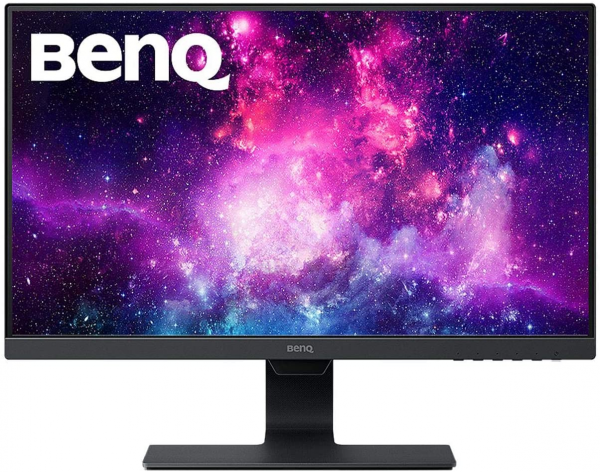BenQ
BenQ GW2480 monitor: a good affordable 24 inch for office use
Aprox. 129€
See specificationsThe BenQ GW2480 is a fairly standard 24-inch screen, but it offers a few little extras like a brightness sensor allowing you to adjust the brightness according to the ambient light for a price that remains very affordable. It remains to be seen whether the display quality is at the level ...
Positive points
Default image quality.
Good contrast for an IPS panel.
Open viewing angles.
Automatic brightness adjustment.
Integrated speakers (rare in this price range).
Bad points
No height adjustment.
Long remanence time.
No USB hub.
Our review
Presentation
Unlike the BenQ GW2470H which has a VA panel, the BenQ GW2480 operates a 24 inch IPS panel (≈61 cm) displaying a Full HD definition of 1,920 x 1,080 px. The manufacturer announces a brightness of 250 cd / m², a contrast of 1000: 1, viewing angles of 178 ° / 178 ° and a response time of 5 ms. The connectivity is quite exhaustive while the position settings are still as limited in this price range. The refresh rate is fixed at 60 Hz, but the monitor does not flicker (Flicker-Free).
Currently offered at around € 110, the BenQ GW2480 is one of the most affordable 24-inch monitors on the market. It competes directly with the HP 24w and its cousin the BenQ GW2470H.
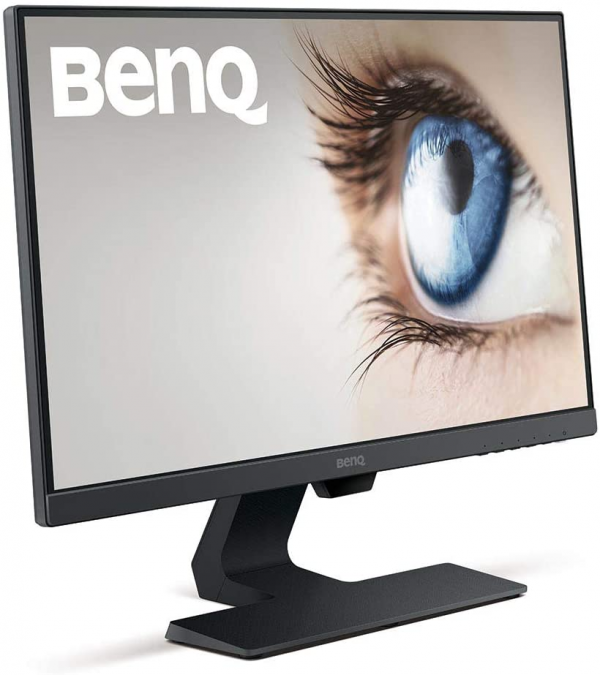
Ergonomics
The BenQ GW2480 opts for a very classic all-black design. The matt plastic is of good quality and is not too sensitive to fingerprints. The 24-inch slab is covered with a matt coating that filters out reflections.
Like most entry-level monitors sold at around € 100, this BenQ is content with adjusting the tilt between -5 ° and + 20 °. The foot is not rotatable and, above all, it is impossible to adjust the height of the screen, a feature yet far from anecdotal, especially for a monitor intended for office use.
The back of the monitor is like the front, sober as possible. Here you can see the VESA 100 x 100 mm mounting system. The connection is oriented downwards, but the base incorporates a well thought-out cable passage system which allows all the cables to exit at the rear.
However, the space is limited enough to use all the connectors at the same time.
The connectivity is rather exhaustive for a monitor in this price range. There is a DisplayPort input, an HDMI input, a VGA input, an audio input and a headphone output. The monitor also has two 1 W speakers whose sound leaves something to be desired, but they still allow you to watch short videos or reproduce system sounds.
The buttons allow you to turn on the screen and access the different settings (brightness, contrast, sharpness, overdrive, gamma, etc.). The menus are readable and the navigation is fluid, but the use of buttons is not always easy and handling errors are frequent.
The light sensor automatically adjusts the power of the backlight according to the ambient light. This is clearly a plus for a monitor at this price, but the sensitivity is quite low and the variation in brightness is limited.
The 24-inch screen looks very small on our reference desk, which measures 140 x 60 cm. The depth of the foot (19 cm) leaves enough space for the keyboard and mouse. The Full HD definition is adapted to the diagonal of 24 inches, with a recoil of between 60 and 70 cm.
By lowering the brightness to 41 to obtain a white at 150 cd / m², the BenQ GW2480 consumes only 11 W, ie a relative consumption limited to 70 W / m², much lower than the average of 100 W / m² of the monitors tested. At the minimum of the brightness (58 cd / m²), the monitor is content with 7 W. At the maximum (255 cd / m²), it climbs to 17 W.
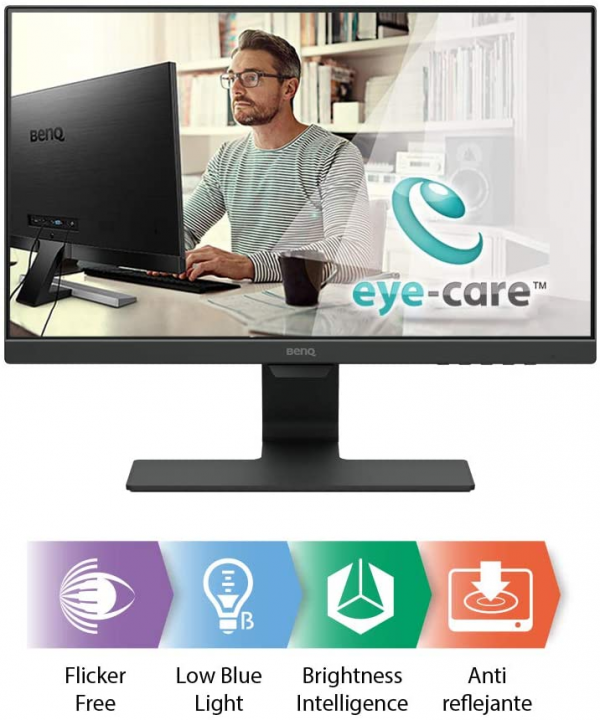
Colors and contrast
Default: average gray temperature: 6,250 K
Default: gamma curve at 2.3
Default: Delta E medium to 3
By default, this monitor displays a fairly correct image. The temperature is very good, with a stable curve over the entire spectrum and an average measured at 6,250 K, fairly close to 6,500 K of the video standard. With the exception of a small off-hook on the very light grays, the gamma curve is fairly stable, but the average at 2.3 does not follow the reference value (2.2). The colors can be considered as faithful with an average Delta E at 3. Remember that the human eye perceives a difference between the expected colors and the colors displayed when the Delta E is greater than 3.
Manual adjustment: average gray temperature: 6,220 K
Manual adjustment: gamma curve at 2.3
Manual setting: delta E medium to 3
To slightly improve the rendering, We lowered the brightness to 41 in order to obtain a white close to 150 cd / m², then we set the gamma to 1, without effect, then to 5, also without effect. The gamma adjustment seems ineffective, at least on our test model. The results are therefore identical and the variation of the brightness has no impact on the rendering, which is a good thing.
Calibrated: average gray temperature: 6,560 K.
Calibrated: gamma curve at 2.1.
Calibrated: average delta E at 2.3.
Calibrating the screen using a probe makes it possible to smooth the temperature and gamma curves. The gamma still retains its imperfection in very light grays, which lowers the average to 2.1. The color rendering is better (Delta E medium to 2), even if the red and the green are still far from perfection. You can download this color profile by following this link.
Good surprise, this IPS panel offers excellent native contrast which we measured at 1,340: 1; and therefore higher than the advertised rate of 1000: 1. Obviously, this rate is not as good as that of VA monitors like the Textorm TX32 or the AOC Q3279VWF, which exceed 4,000: 1, but it already allows to benefit from fairly deep blacks .
The average difference in lighting uniformity is only 7% for the entire 24-inch panel. We did not find any light leaks in the corners or clouding on our test model. As far as viewing angles are concerned, IPS technology is free from defects and offers very open angles, without any variation in brightness or color.
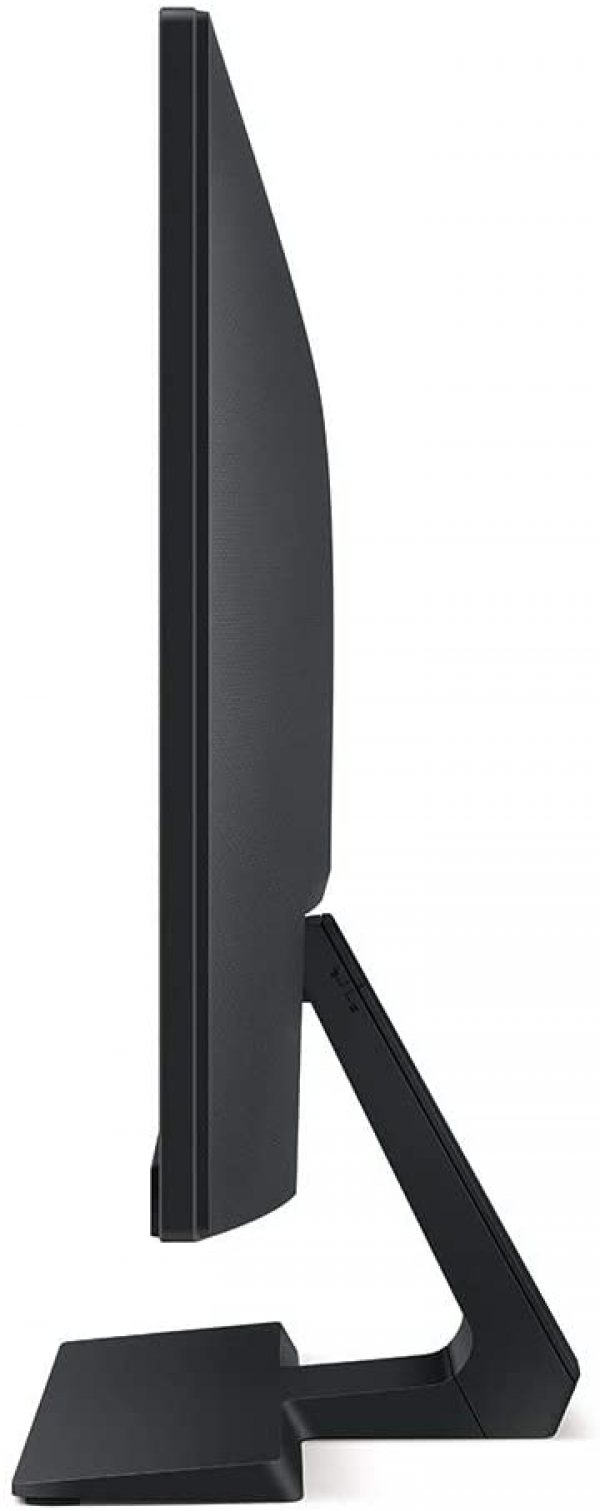
Reactivity
The BenQ GW2480 does not use Pulse Width Modulation (PWM) to adjust the brightness. It therefore does not flicker and does not cause headaches in the most sensitive people.
We measured the remanence time at 13.5 ms. This high remanence results in a blurring effect behind moving objects. Ghosting is slightly visible, even with the overdrive setting set to "high". The "Premium" setting results in a very unpleasant reverse ghosting effect. Finally, we measured the delay in the display (input lag) at 9.7 ms (60 Hz). There is thus no offset between the source and the display on the monitor.
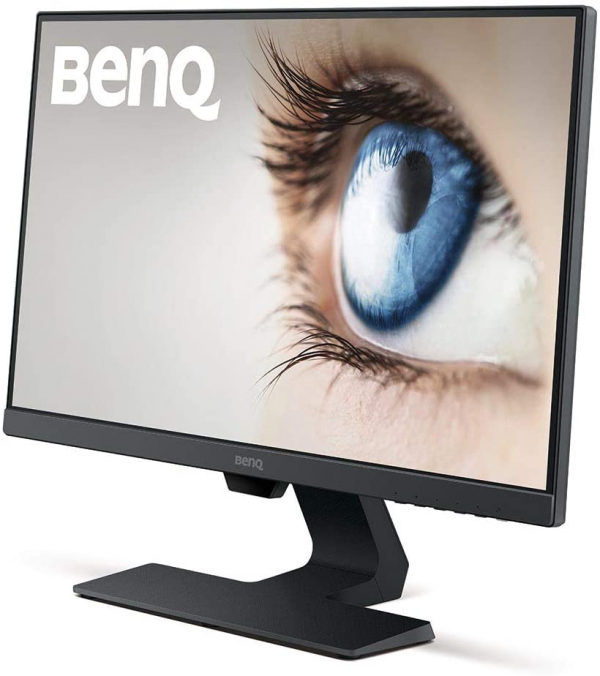
Conclusion
The BenQ GW2480 is a good monitor for office use. It displays a quality image (color, contrast, viewing angles) and sins especially by its limited ergonomics, but classic in this price range. It stands out from the competition by a few appreciable small details, such as the cable passage system and its light sensor.
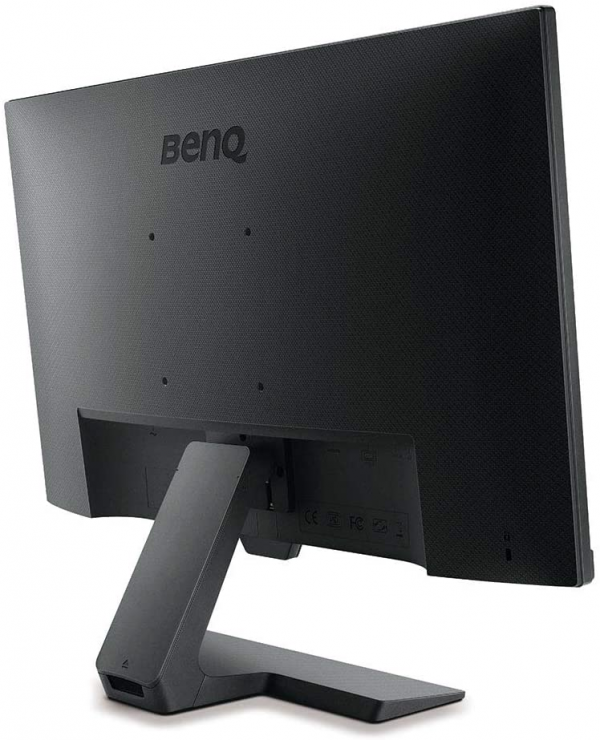
Specifications

